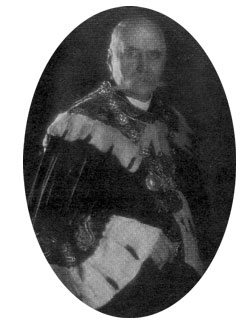
|
| Most of Max Julius Louis Le Blanc’s (1865-1943) chemical studies involved the phenomenon of electrochemical polarization: the nature of the decomposition voltage of aqueous solutions of electrolytes and the groundwork for the understanding of the processes occurring at the electrodes in electrolysis. By using a third, or reference electrode, he was able to determine the anodic and cathodic potentials separately. Noting that the decomposition potentials of many aqueous solutions of salts were nearly the same (1.17 volts), he concluded that the electrode processes were identical and that hydrogen and oxygen was were discharged at the electrodes. The introduction of the hydrogen electrode is perhaps his most important contribution to science. Born in East Prussia ( now Poland), Le Blanc received his education at the universities of Tubingen, Munich and Berlin before becoming a professor of physical chemistry at Leipzig. He left Leipzig to become the director of the electrochemical division of the Hochster Farbenfabriken. He then served as chair of physical chemistry at the technical institute at Karlsruhe, and in 1906 he became the director of the physical chemical institute of Leipzig. He was personally responsible for much of the building and equipment of these two institutions. During his career, Le Blanc
wrote several highly successful textbooks on electrochemistry, including
The Elements of Electrochemistry (1896) and A Textbook of Electrochemistry
(1907). |












